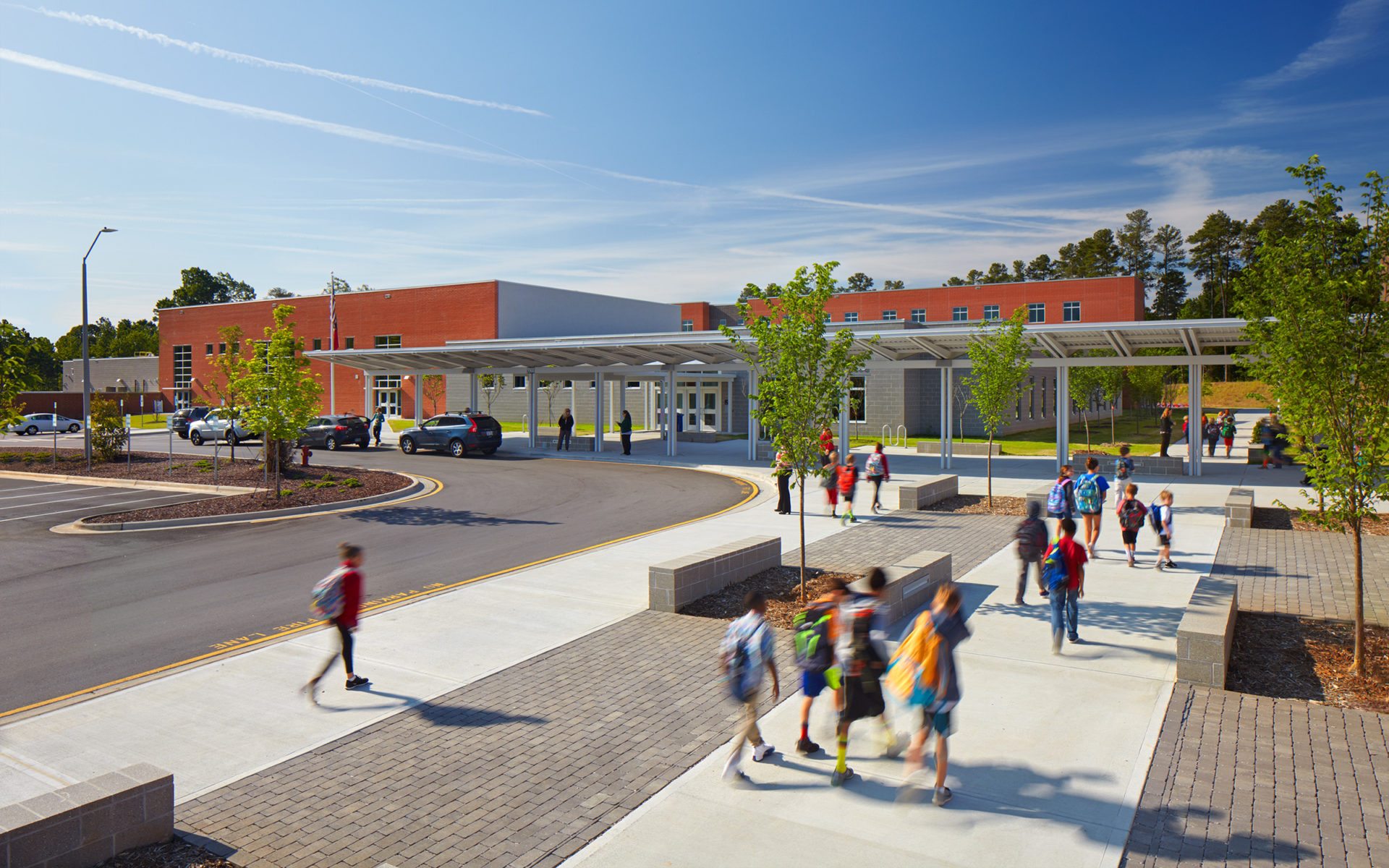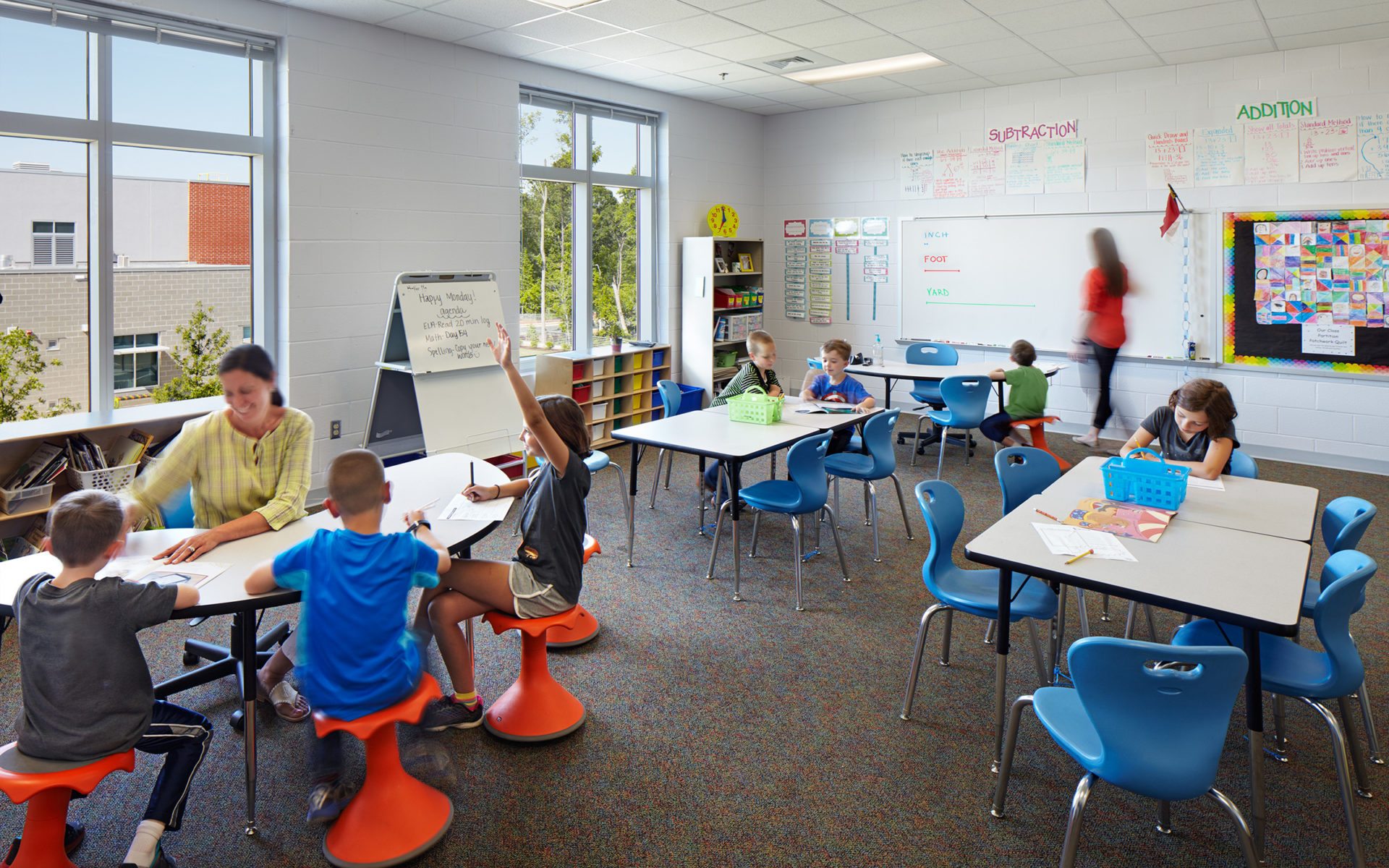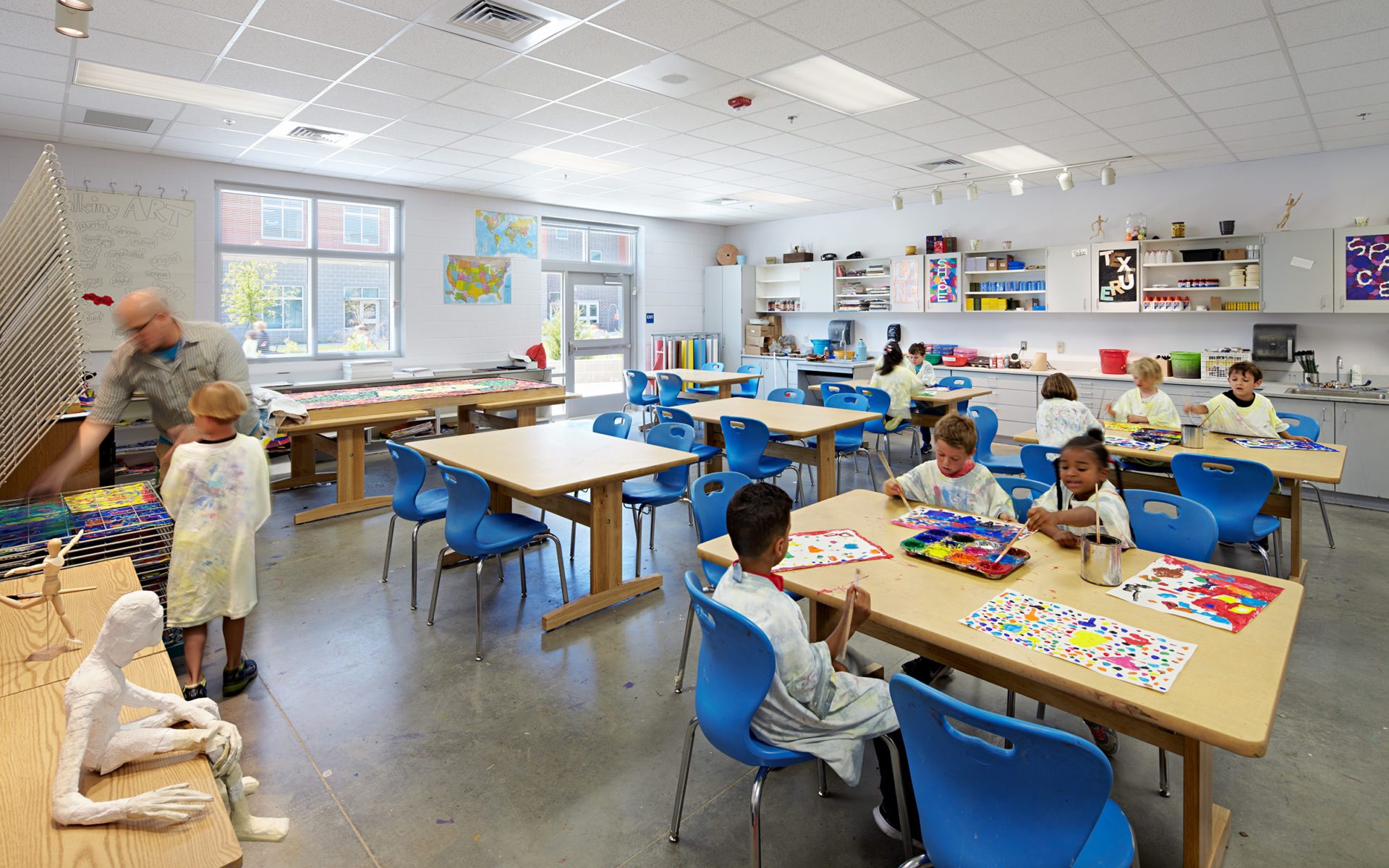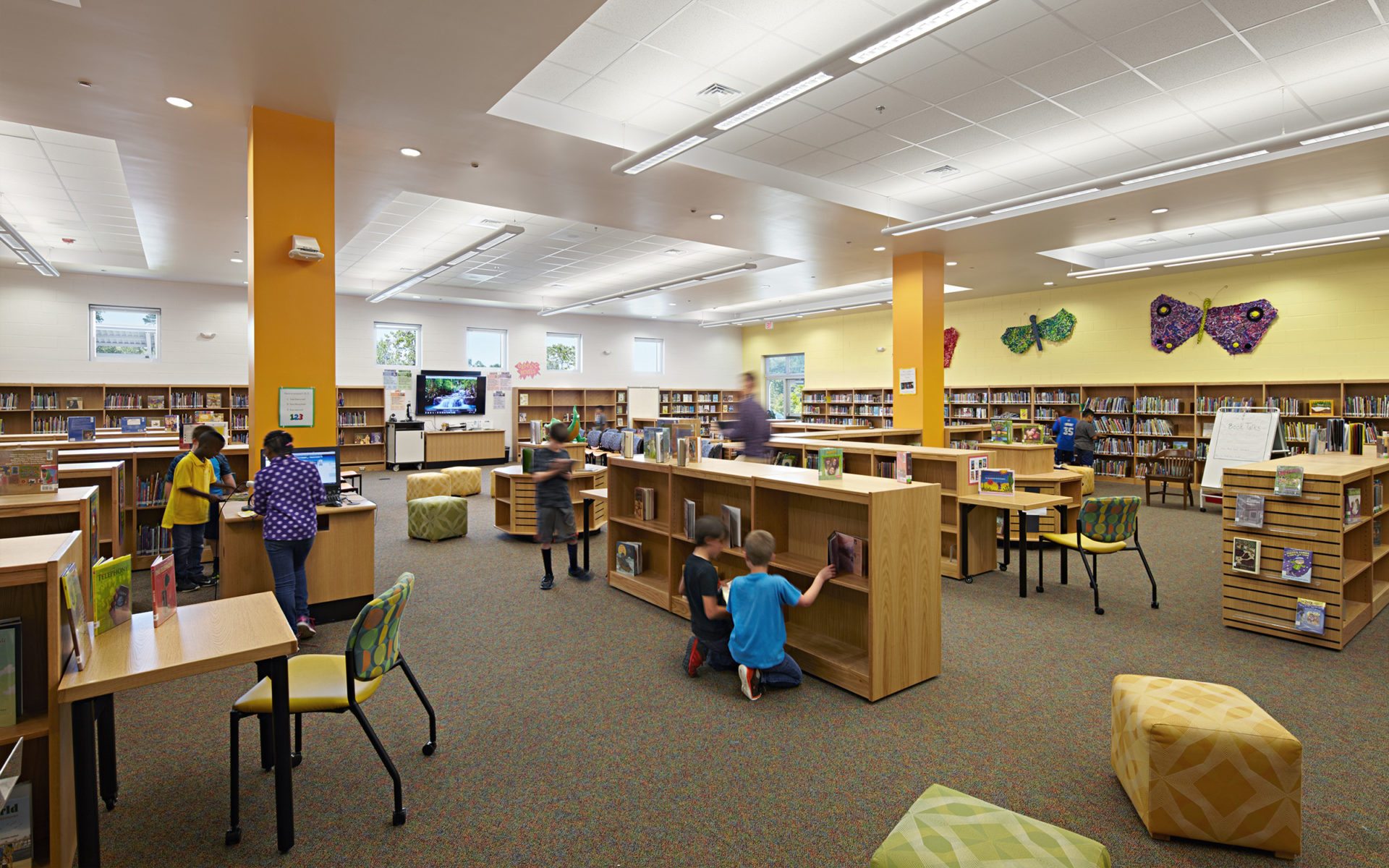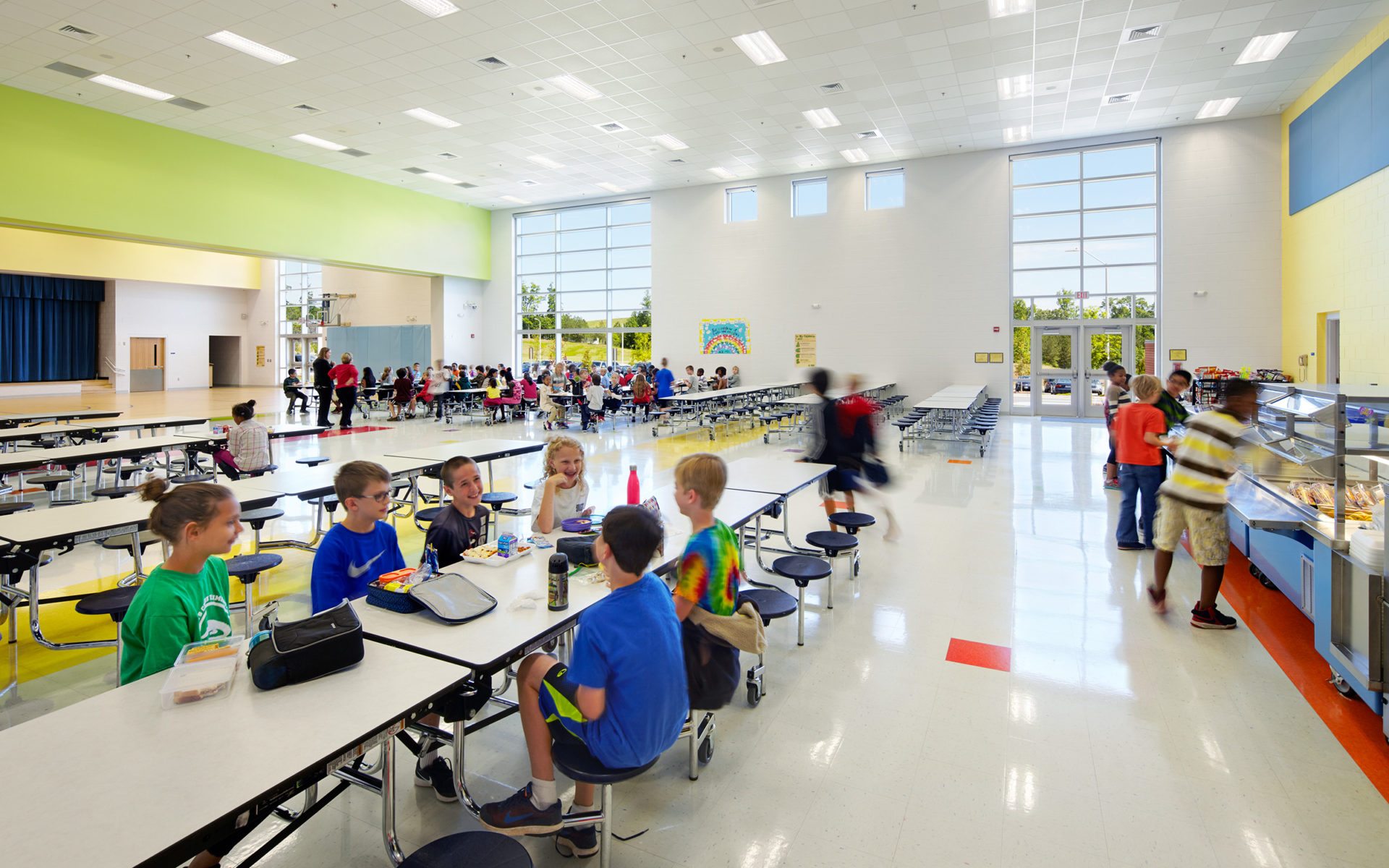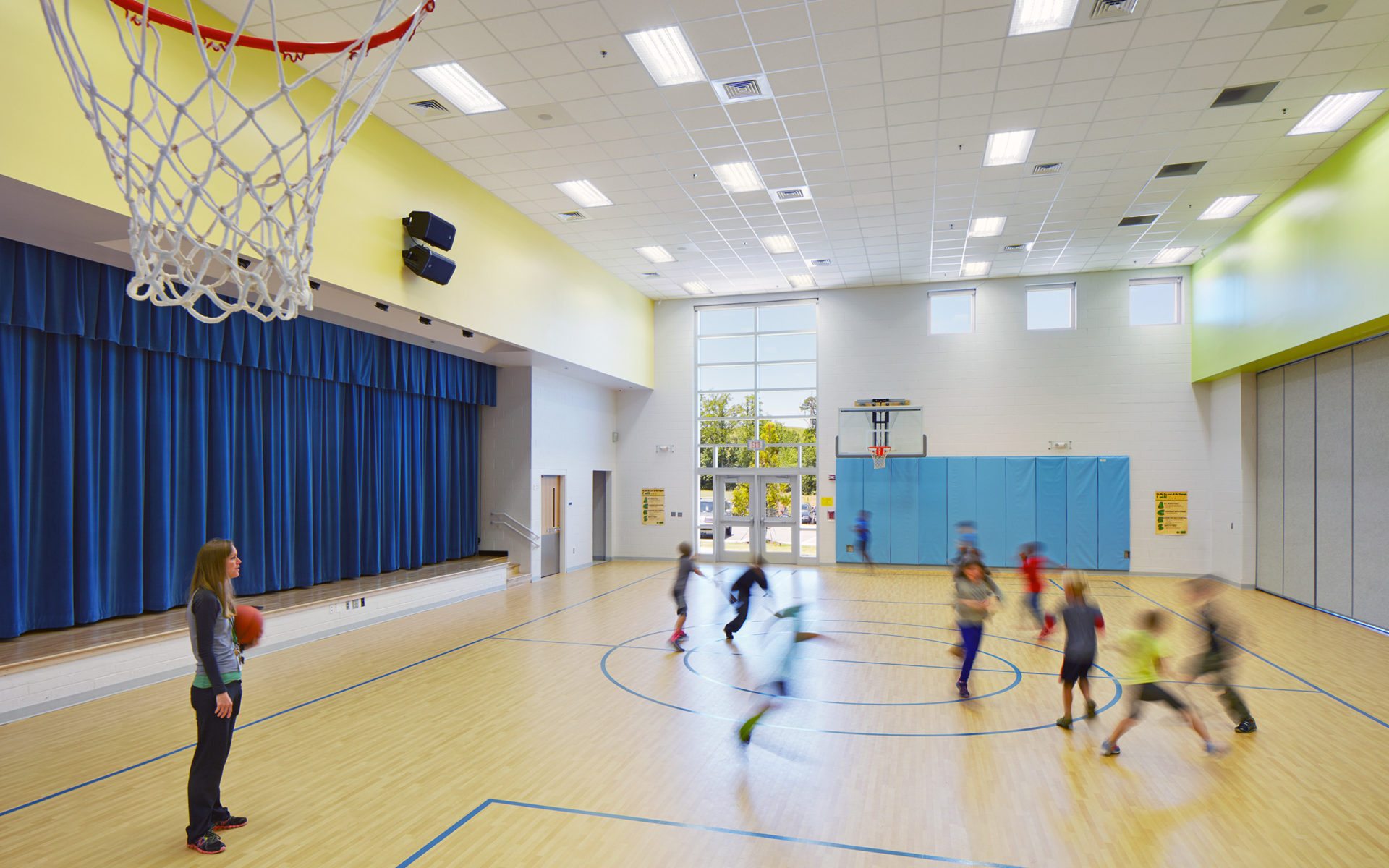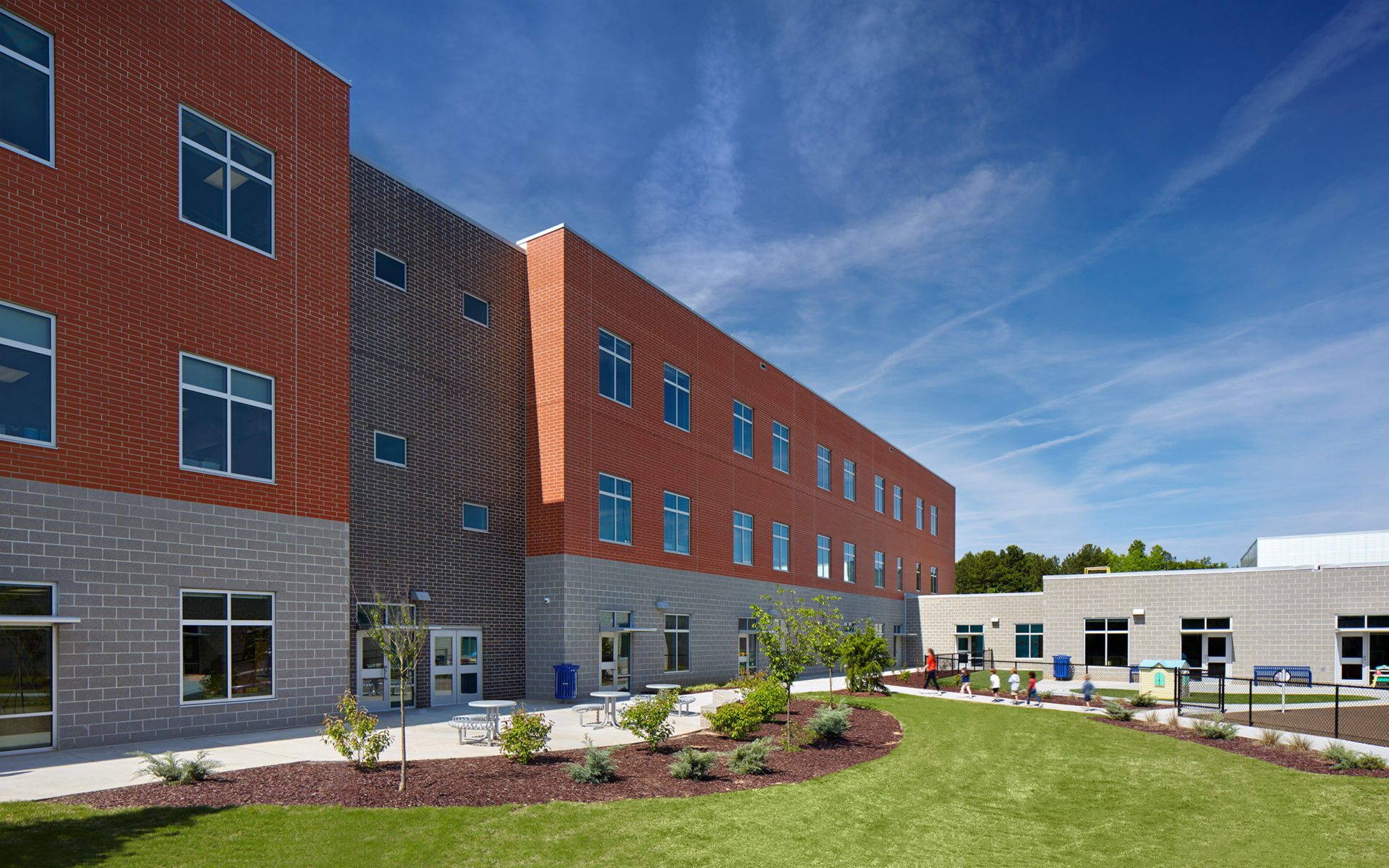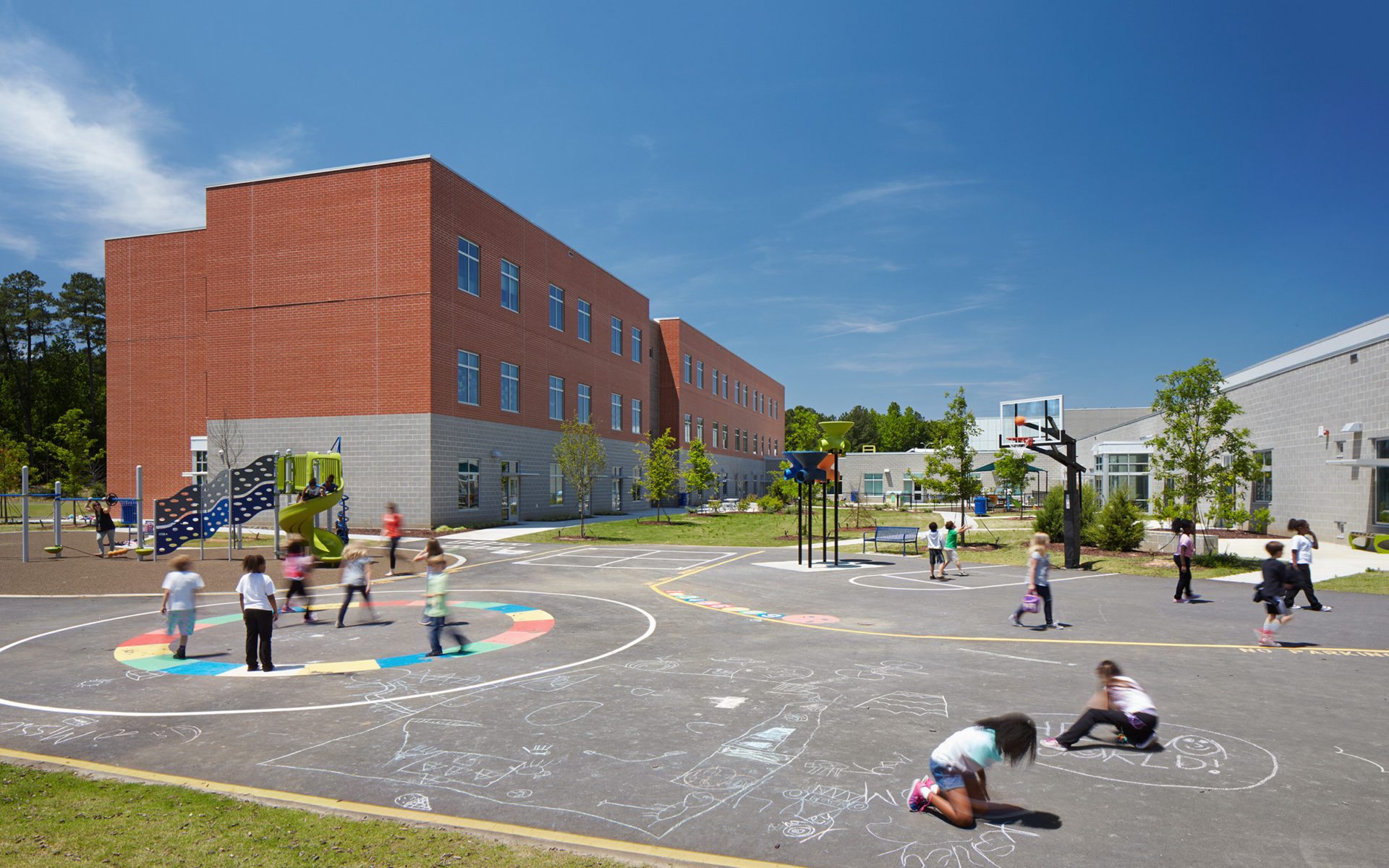Opening in August 2015, Abbotts Creek Elementary School is the thirteenth use of a Clark Nexsen prototype design. Over a long partnership with the Wake County Public School System, our firm has leveraged a prototype concept we developed in 1995 to create a new elementary school design for the school system. Adapted to meet ever-changing needs over the years, the initial prototype was constructed as Timber Drive Elementary, an 80,000 square foot, single story school with the capacity to serve 700 students in core spaces and 600 students in classrooms.
Abbotts Creek Elementary School features an expanded concept to serve 900 students in core areas, with an 800 student classroom population. This particular school is located on a landfill borrow site with an EMS station, a community center, and a county park. A future skate park is also planned for the site. The joint use of the site allows taxpayer savings through sharing fields and amenities between the different local municipalities and county school system. Both the scale of the facility and the choice of building materials fit within the context of the existing community and neighborhood buildings.
Abbotts Creek Elementary School includes dining and physical education space, an administrative area, a common use area with a media center, and specialized classrooms such as art and music shared by all students. Additionally, these spaces can be used by the community while securing the remainder of the school. In an effort to build responsibly in a time of fiscal restraint, the structural system was modified from steel frame to become a load bearing structure to take advantage of market swings. Exterior building materials and interior finishes were selected for durability and low maintenance requirements as well as sustainable attributes. The building envelope was modified to also meet the requirements of a changing, more restrictive energy code. The school is arranged so that bus riders can be segregated from car pool students, which allows for a better vehicular site flow at drop-off and pick up times, resulting in greater safety for students.
Inside the school, the spaces are full of color and natural light, creating an environment that supports learning and makes school an enjoyable place to be. The rooms are spacious enough to allow movement for those students who need activity to learn, as well as space for students to be “alone” for quiet study. Technology has been incorporated into every classroom and other spaces throughout the school, creating a facility that promotes learning in every space.
